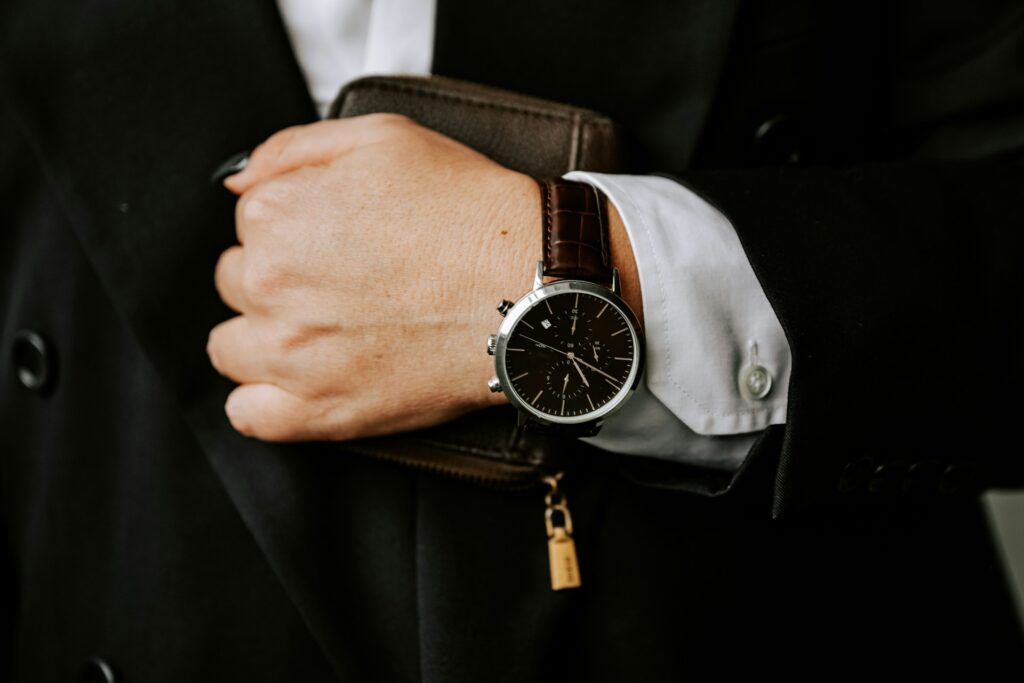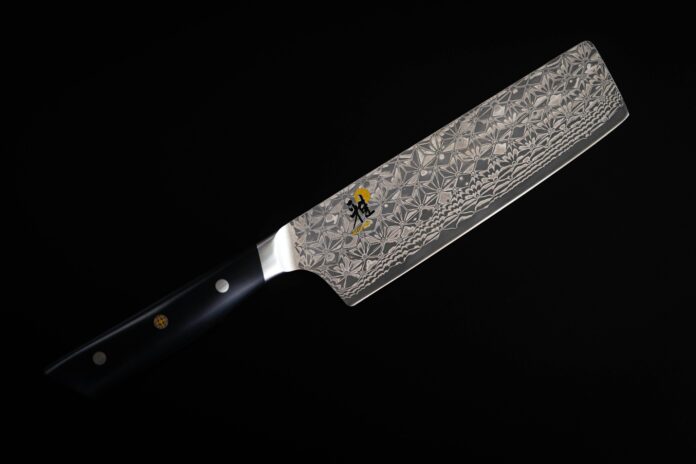If someone were to ask you what your watch does, we wouldn’t blame you for assuming that they were three hands short of a timepiece. Because it tells the time, of course, nothing more, nothing less, and don’t ask me again.
But let’s be honest, to many a watch is so much more than a functional device designed for timekeeping. It’s a fashion accessory, a statement of intent, a health checker, alarm setter, peace wrecker and so much more. From the boardroom to the beach, from vintage heirlooms to cutting-edge smartwatches, your timepiece can be your most versatile companion. The question more aptly posed should be; is there anything that thing can’t do?
So, whether you have a real deal haute horology timepiece or have been shopping in Bangkok’s markets for something off the factory floor, here’s how to get the most out of your watch, whatever its style.
Don’t Underestimate What Your Watch Can Do
We’ve already established that a watch isn’t simply for time telling, but it’s also true that all watches weren’t created equal. Indeed, there are certain watches which have more features than others (many of which lay undiscovered for a lifetime) as well as design elements and aspects which set them apart from the rest.
Probably the most commonly misunderstood element is the watch’s chronograph. The chronograph allows you to measure time when it elapses, but can also track GMT (pretty handy if you travel a lot and switch time zones). Take the Breitling Navitimer, for instance – its slide rule bezel can calculate fuel consumption, climb rates, and even currency conversions, yet most owners never venture beyond using it as a standard timepiece.
Modern complications go far beyond simple chronographs. Moon phase indicators, found in pieces like the Jaeger-LeCoultre Master Ultra Thin Moon, track lunar cycles with remarkable precision. Perpetual calendars account for leap years without adjustment until the year 2100. Even something as seemingly simple as a rotating bezel on a diver’s watch serves multiple purposes – from timing your parking metre to perfectly cooking pasta.
In general, a watch’s merit is measured depending on its complexity, in addition to its aesthetic appeal, design, heritage, and construction. If you have a complicated watch, try to at least find out what it can do – and take advantage of it accordingly. Many manufacturers now offer apps and online tutorials to help you master your timepiece’s full potential.

Form Follows Function (Or Does It?)
Well, in the watch world, perhaps not. But before you go shopping for new wrist candy, you’ll need to decide exactly what you want from your watch. In the modern world, it’s unlikely you’re going to be genuinely reliant on it to keep time, though of course it needs to do that accurately to keep up the façade that it’s something more than glorified jewellery.
The key is understanding the watch categories and what they excel at. Field watches, originally designed for military use, offer superb legibility and durability – perfect for outdoor adventures. Dress watches prioritise elegance and understatement, sliding effortlessly under a shirt cuff. Sports watches balance robustness with style, whilst tool watches like the iconic Rolex Submariner were built for specific professional tasks but have transcended their original purpose to become luxury status symbols.
If you’re looking for your watch to do more for you, like monitor your steps, your heart rate, serve as an alarm and the rest, then obviously a smartwatch is a smart choice. The latest Apple Watch or TAG Heuer Connected series merge traditional Swiss craftsmanship with Silicon Valley innovation. If you’re seeking precision for the sake of training or work, then something durable and digital is your best bet. But more often than not, the watch’s appearance and level of comfort are the dealbreakers. In this case, form triumphs over function.
A Watch For Every Occasion
Wardrobe over wrist, or so the mantra should so often suggest. Because watches can complete your look and showcase your personal sense of style in a way few other accessories could ever hope to. And just as you own more than one pair of shoes worn suitably for different occasions, so you should also consider owning more than one watch.
The concept of a ‘watch collection’ isn’t just for aficionados anymore. Even with a modest budget, you can build a versatile selection. Start with the basics: a stainless steel sports watch on a bracelet works for casual Fridays and weekend brunches. Add a dress watch with a leather strap for formal events or business functions – something like an Omega De Ville or a vintage-inspired piece offers timeless sophistication. For the adventurous, a G-Shock provides indestructible functionality without breaking the bank.
If splurging on several timepieces seems frivolous (us too) then you can comfortably get away with owning just two. Something simple for the daytime, such as bracelet strap pilot watches, and something more dressy for the evening. This generally equates to either a silver or gold case, a beautiful leather strap, and dials which are subtle and understated. The beauty of modern watch design is its versatility – a well-chosen piece can transition from office to opera with just a strap change.

Switch Up Your Straps For Seasonal Style
Watches can reflect the seasons, your mood, or the occasion, just like clothing. That being said, a chunky chronograph watch will not go with a black-tie event, and neither will a leather-strap watch look or feel appropriate for a day at the beach.
For the upcoming warmer seasons, you’d do best with a NATO strap since this fabric is a lot more comfortable and handles a sweaty wrist well. Originally designed for military use, NATO straps have become a fashion statement in their own right, available in countless colours and patterns. James Bond’s Omega watch, as Seamaster on a striped NATO strap, sparked a trend that shows no signs of slowing.
For the beach, though, the best type of watch strap is one which is made from silicone or rubber, and you can easily find them on divers’ watches as well, which means you won’t need to worry about making the watch wet. Autumn calls for rich leather in cognac or burgundy tones, whilst winter might see you reaching for a robust metal bracelet or even a sophisticated mesh band.
The strap game has evolved considerably – quick-release spring bars mean you can transform your watch’s personality in seconds. Brands like Tudor and Oris now include multiple strap options with their watches, acknowledging that versatility is key to modern watch ownership.
Take Care Of Your Timepiece Like The Investment It Is
No matter the worth of your watch, it’s a piece of jewellery and should receive the proper care and attention such a title suggests. A good quality watch will even increase in value (unless it’s a fake of course) as time goes by, especially if you keep its inner and outer workings in top condition. This is even more pertinent if your timepiece belonged to someone else in the family, passed down as an heirloom and as such, holds sentimental value.
Regular servicing is crucial – mechanical watches should visit a qualified watchmaker every 3-5 years, much like a car needs its MOT. Between services, simple maintenance makes all the difference. Keep your watch away from magnets (they can affect the movement), avoid extreme temperature changes, and give it a gentle wipe with a microfibre cloth weekly to prevent grime build-up.
For automatic watches, consider a watch winder if you rotate between pieces – it keeps the movement running and lubricants distributed. Store your watches properly too; a dedicated box or roll prevents scratches and damage. If your watch is water-resistant, have the seals checked annually, especially if you regularly swim or dive with it.
Remember, scratches and patina can add character – many watch collectors prefer the ‘honest wear’ that tells a story. However, there’s a difference between characterful ageing and neglect. With proper care, your watch won’t just keep time; it’ll become a treasured companion that might one day grace the wrist of the next generation.
Indeed, much like an engagement ring, a quality timepiece often marks life’s significant moments and carries deep emotional value beyond its material worth.
The Bottom Line
Whether you’re sporting a £50 Casio or a £50,000 Patek Philippe, your watch is more than just a time-telling device. It’s an extension of your personality, a practical tool, and potentially a wise investment. Understanding its capabilities, choosing the right piece for the right moment, and maintaining it properly ensures you’ll get the maximum enjoyment and value from your timepiece. After all, in an age where we’re surrounded by screens telling us the time, choosing to wear a watch is a conscious decision – so make it count.





